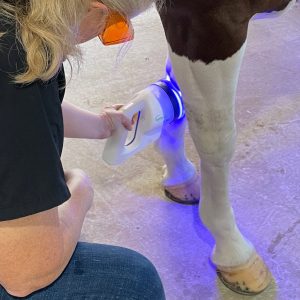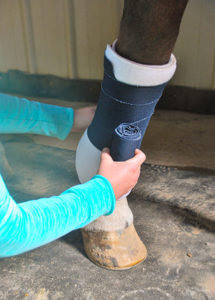Study: Oxytocin Does Not Cause Cardiac Changes in Mares
- Topics: Anatomy & Physiology, Article, Basic Care, Breeding and Reproduction, Breeding Basics, Cardiovascular System, Equine Care Professions, Foaling & Foaling Problems, Heart & Cardiovascular Problems, Horse Care, Mare Care, Mare Care and Problems, Medications, Vet and Professional, Veterinary Practice

“Oxytocin infusion is the best treatment of retained placenta in the horse, and the present study shows that this method is safe with regard to cardiac function in horses,” said Christine Aurich, DVM, PhD, head of the Graf Lehndorff Institute in Neustadt, Germany.
In their study, Aurich and her fellow researchers injected 27 study mares with either oxytocin or saline, intravenously, in three stages: an hour after foaling, 12 hours after foaling, and seven days after the first post-foaling ovulation. They studied cardiac changes after the injections in these otherwise healthy mares to see what effects, if any, the drug (or saline control) had on the mares’ hearts and circulatory systems.
Blood parameters and electrocardiogram readings did not reveal any cause-effect relationship between oxytocin injections and cardiac changes, Aurich said. This is contrary to popular scientific belief that oxytocin causes these changes—likely due to the fact that cardiac changes do occur during labor and foaling, at the same time that oxytocin is released naturally. However, the current study suggests it’s not the oxytocin that’s responsible for those cardiac effects, but other phenomena relating to the birthing process
Create a free account with TheHorse.com to view this content.
TheHorse.com is home to thousands of free articles about horse health care. In order to access some of our exclusive free content, you must be signed into TheHorse.com.
Start your free account today!
Already have an account?
and continue reading.

Written by:
Christa Lesté-Lasserre, MA
Related Articles
Stay on top of the most recent Horse Health news with















